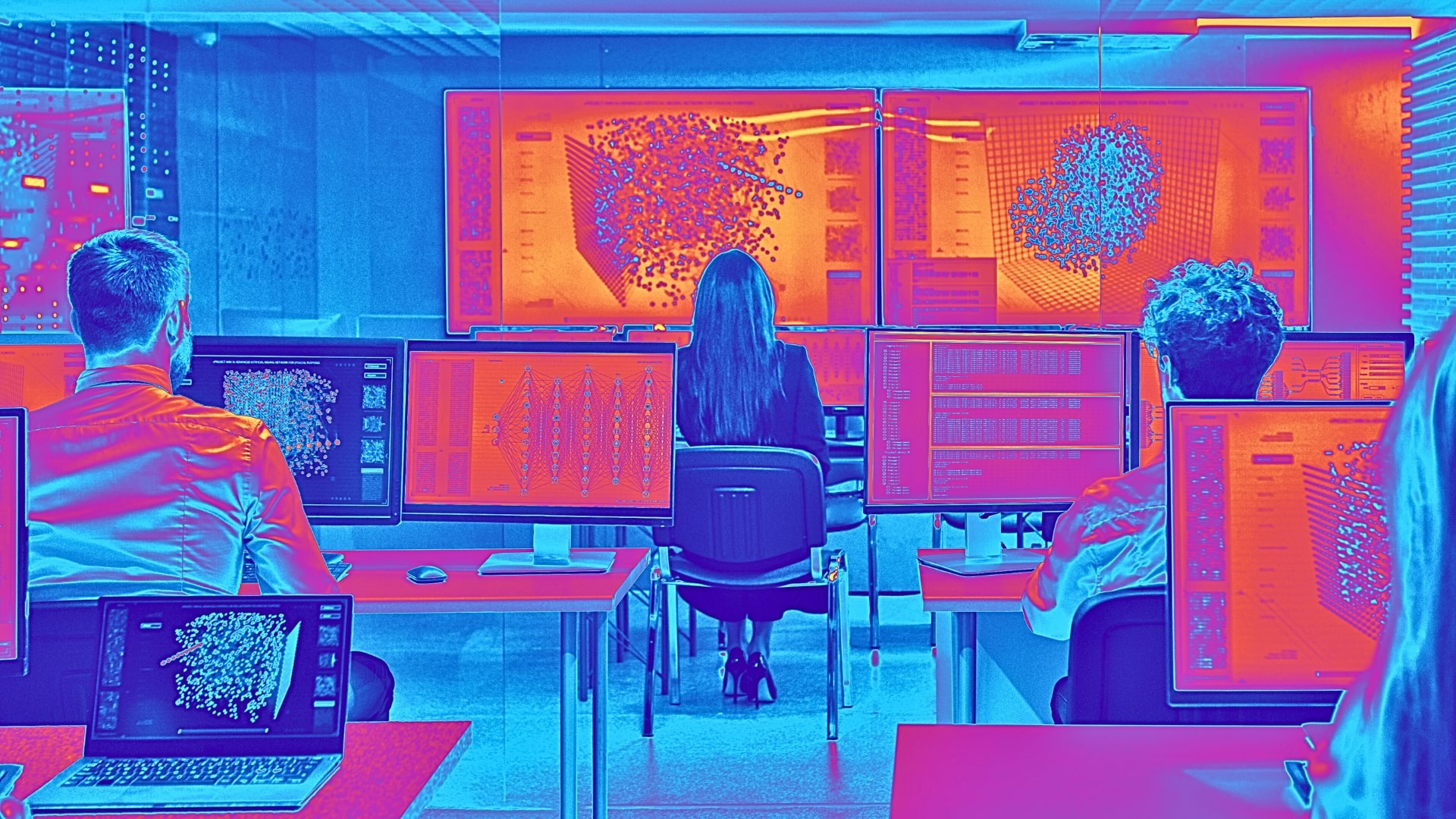Key Concepts and Functions of AI
What is artificial intelligence (AI)? Let me try to explain it in simple terms. It can be imagined as separate software or an entire system. This software can easily perform tasks that require human intelligence.
- Tasks for recognizing voice and live speech.
- Work and analytical processes with large data sets.
- Making complex decisions based on statistics and mathematical calculations.
- Creating forecasts and analytical models for different fields.
Modern artificial intelligence is capable of these tasks thanks to machine learning algorithms. However, it cannot handle this on its own; neural networks assist it. It is neural networks that perform tasks that were previously done by humans.
Before we continue exploring artificial intelligence, let’s take a moment for some theory. This way, we can communicate on the same wavelength. I have prepared a list of important terms you will encounter when working with neural networks and AI.
Machine Learning — a technology that allows a system to improve and learn independently. The learning process is based on data analysis and performance enhancement. The system itself does not undergo changes in its code.
There is also the concept of Deep Learning. Deep learning is a more advanced form of machine learning. This model is based on multilayered neural networks. Such a structure allows the system to model complex data structures.
Neural Network — an architecture that mimics the functioning of the human brain. It consists of neurons that work with the received information. They process, analyze it, and help the system improve.
Pattern Recognition System — a learning algorithm whose goal is to teach the system to recognize objects and classify them. The system should be able to work with objects in photos, videos, and even in the real world. A simple example is a facial recognition system in a crowd, which is actively used in various countries.
Big Data — this term will come up frequently. It refers to data sets used in the training process of AI. Over time, AI learns to identify hidden trends, patterns, and tendencies.
Reinforcement Learning — a separate learning algorithm for the system. It is built around feedback. The system learns and receives feedback. Thanks to this feedback, the system understands the results of its work and strives to improve them.
What has the development of artificial intelligence led to? What is it capable of? Let’s take a look.
- AI allows for the automation of work tasks. This significantly saves time and resources for businesses. AI is often used for automating data entry in warehouse management.
- As I mentioned earlier, AI is great for analyzing large data sets. It is used for creating forecasts and analytics in business. It helps generate forecasts for price growth, sales, or market trends based on data from a specific time period.
- It is also used for transcribing speech and text, all thanks to the methodology of pattern recognition systems. AI can be integrated into your business for recognizing and interpreting speech. For example, you can create a smart chatbot that is almost indistinguishable from a regular operator.
- Artificial intelligence allows you to find the most efficient way to solve tasks. AI is devoid of emotions and human factors; it operates solely on numbers and data, making it an indispensable assistant in logistics, financial management, and production.
- AI technology allows for generating and suggesting personalized content. How? Think of Netflix. Algorithms recommend series and movies based on your interests.
- Another very important feature is adaptability. AI adapts almost instantly to new data and conditions. This is a fantastic characteristic that makes it an essential tool in the dynamic environment of finance or cybersecurity.
Having covered the basic concepts and features of AI, do you want to know how modern AI works? Let me explain.
How do Neural Networks and AI Work? Let’s delve into the fundamentals of these systems.






























